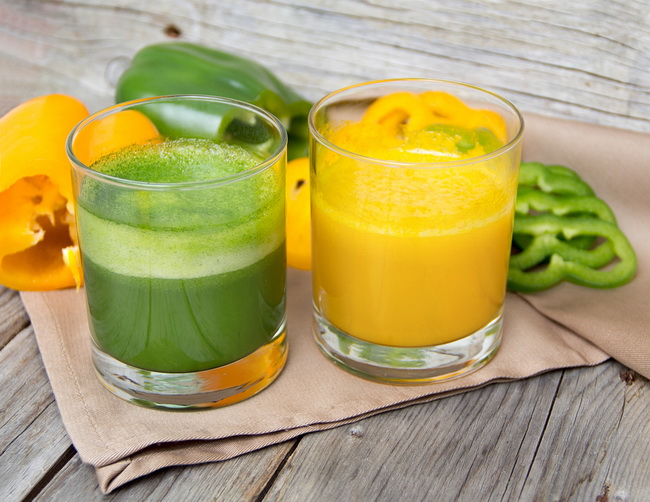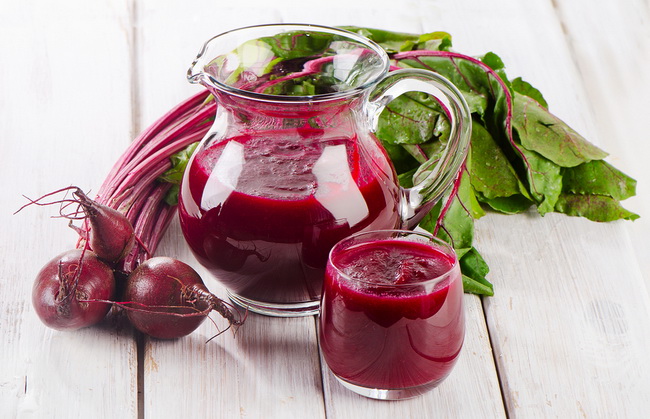- Make It Yourself Lavender Heart-Shaped Bath Bombs!
- 20 Things You Never Knew About “Down There”
- 12 Best Foods For Those Suffering From Arthritis Pain
- 12 Personal Hygiene Mistakes Almost Everyone Makes (Mom Never Told You About #4!)
- 15 Medicinal Plants And Herbs From The Cherokee People
- 12 Mind-Blowing Benefits Of Drinking Coconut Water During Pregnancy
- 12 Outstanding Winter Foods That Won’t Fatten You Up Like A Christmas Turkey
The Shocking Facts No One Ever Tells You about Juicing

Photo credit: bigstock.com
Juicing is all the craze right now and for good reason. It’s a fantastic way to power your day and consume many of the nutrients that your body requires to work its absolute best throughout the day. But there are some things being said about juicing that aren’t really true. Although you probably won’t find anyone to say that juicing is bad for you or that it’s unhealthy, there are some things many people just accept as fact about juicing without every questioning it.
Keep reading and find out the shocking truth that no one ever talks about when discussing juicing.
1. You Will Lose Tons of Weight from Juicing
Well, this isn’t exactly true. A more accurate statement should be that you can lose weight while juicing, but it doesn’t mean that you will. Most vegetables are very low in calories, and even some fruits, but eating too much of anything (including drinking your calories) can actually pile on pounds instead of helping you lose them. A one half cup of fruit has only about 60 calories, however, juicing 4 or 5 cups of fruit can add up to 500 or 600 calories. If you are trying to lose weight, remember that juicing is not the same as consuming “free” calories- they still matter. And if you are adding honey, nuts, or anything else other than spices, be sure you add up those calories too.
2. Juicing Provides More Vitamins
This statement is partially true. Some fruits and vegetables contain tons of vitamin C and B vitamins that are destroyed simply by slicing and juicing. So in order to get the most possible vitamins from your food, always slice and prepare them just before juicing and, whenever possible, leave the skin on! See also juicing guide.
3. Juicing is Better For You than Eating the Whole Vegetable or Fruit
This is one of those “it depends” issues. For those of you who do not like most veggies, or even fruit, and you find it difficult to eat even one serving of fruit or vegetable each day, however, you love juice, then yes, juicing is a great way to get those vital nutrients into your body. For those of you who like most fruits and veggies and have no trouble getting your 5 per day, nothing is as good eating raw, organic fruit and veggies. Your body really needs the fiber and most of us don’t even come close to getting the recommended 25 to 30 grams of fiber our bodies need each day. Aim to eat or juice two whole fruits and 3 or 4 vegetables each day. Be sure to choose all different colors so you get a healthy mix of vitamins and minerals.
Continue to Page 2

Photo credit: bigstock.com
4. The More Expensive the Juicer, the Better it Works
Manufacturers who sell those expensive juicers will tell you this, but that’s because they have something to sell you! Many blenders work well but if you have your heart set on a juicer, read reviews and shop around. Sometimes you get what you pay for, but in this case, more expensive is not necessarily better.
SEE ALSO: How to Get Started Juicing, How to do it Right, and What to Avoid
5. The Best Juices are Those with No Dairy or Fat, such as Avocados or Butter
A new study shows that this is definitely not true. Researchers at Purdue University found that adding a little fat can help your body absorb nutrients. This research did use salads instead of juicing, but the idea is the same. When subjects were served vegetable salads that included various amounts and types of salad dressings (fat free, saturated fat, monounsaturated and polyunsaturated types) they found that the blood of subjects who ate fatty dressings had more healthy carotenoids, such as lycopene, beta-carotene, and lutein, than those who ate non-fat dressings. Carotenoids are known for being super disease fighters and can reduce the risk of heart disease, protect bone density levels, slow age related eye diseases and even lower the risk of cancer.
In fact, these researchers found that the salads that had the most amount of fat (20 grams) gave subjects the highest absorption of carotenoids. So it goes to reason that if some fat can help you absorb more nutrients from salad veggies, the same should be true of juicing. So add some avocado, butter, or nuts to your favorite juice and get more of the vitamins you are juicing for in the first place!
Just a quick note here: If you are taking prescription drugs, talk to your doctor before you go on a juicing program. Although many people drink juices with no issues, there are possible interactions. For example, some foods such as kale and spinach contain large amounts of vitamin K and it can sometimes interfere with how blood thinners work. If you are taking any prescription drugs, always talk to your doctor first, just to be safe.
Happy Juicing!
Sources:
Jennifer Barr, MPH, RD, LDN, owner, Downingtown Nutrition & Weight Management Center; adjunct instructor, West Chester University, West Chester, PA.
Institute of Medicine. “Dietary Reference Intakes for Energy, Carbohydrate, Fiber, Fat, Fatty Acids, Cholesterol, Protein, and Amino Acids,” The National Academies Press, 2005.
U.S. Department of Agriculture: “Phytonutrient FAQs.”
Manuel Villacorta, MS, RD, founder, Eating Free; owner, MV Nutrition, San Francisco.
































